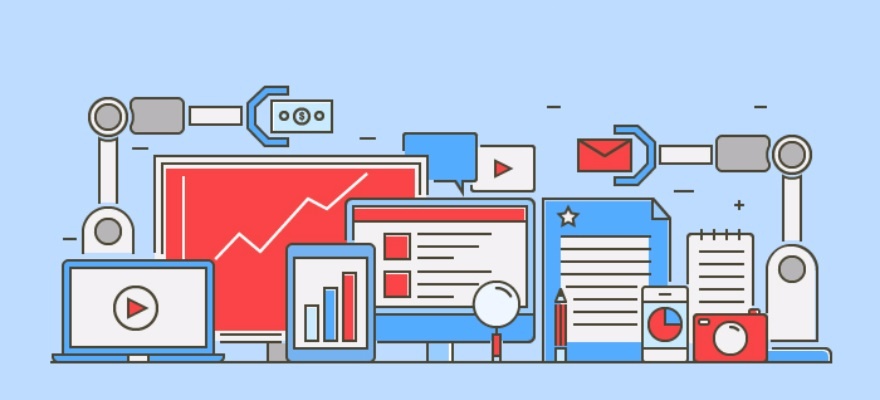Is email marketing or automation best for B2B lead generation?
Considering whether to use marketing automation or email marketing in your strategy? We've broken down the benefits of each to help you decide.

Recent statistics by Emailmonday show that 51% of companies are currently using marketing automation as part of their B2B lead generation strategy with more than half of B2B companies planning to adopt the technology in the near future. That's interesting, isn't it?
Imagine this scenario: you receive an email from a company you either haven’t heard of or have had limited interaction with. The context of the email has little relevance to you personally, nor does it follow-up on any previous interaction you have had with the company.
Now imagine a second scenario: you receive a personalised email from a company you have previously engaged with. Say you have previously read one of their guides. The email thanks you for reading their guide and suggests further reading material, based on previous content you have downloaded. Which email are you more likely to engage with? We’d hazard a guess at the latter.
This is a prime example of marketing automation and it is rapidly taking over from traditional email marketing. In fact, companies which automate their lead generation can expect a 10% or greater increase in revenue in six to nine months, reports Gartner.
So, why are so many marketers using email automation to fuel their B2B lead generation strategy? Take at the look at the key benefits below.
Deliver marketing qualified leads
In many instances, a lead can fail to convert due to a disconnect between sales and marketing. Sales may criticise marketing for supplying them with leads that simply aren’t ready to buy. Without a sophisticated email automation system such as HubSpot, it can be difficult to accurately track a prospect’s engagement with your company, such as pages visited and guides downloaded. With marketing automation, marketers can instigate lead scoring, effectively delivering leads to sales that have met a certain criteria, such as downloaded X number of guides, signed up for a consultation, or work in a certain industry.
Save time
If you’re instigating an effective online lead generation strategy, you will know that it can be extremely time consuming. Traditional email marketing requires a lot of manual work, especially in the complex B2B sales cycle, where prospects require extensive nurturing before they are ready to buy. Furthermore, as your company grows, managing thousands of contacts manually can become very complex. HubSpot’s marketing automation software significantly reduces time spent on email delivery. Once a workflow has been set up (more on workflows later), you can focus on tracking and responding to interactions more effectively, while marketing automation continually nurtures leads with relevant emails and converts into customers.
Deliver stage-specific emails
Typically, a company may send a few generic emails a month in bulk to their contact base. While it is possible to record email clicks and open rates, these statistics bear little relevance in a lead generation strategy. Emails that are automated are catered to a prospect’s stage in the buyer’s journey as well as their engagement with your company. At the foundation of HubSpot’s marketing automation are ‘workflows’.
When setting up a workflow, marketers can dictate a set of automated actions that are executed based upon a specified starting condition, such as filling in a form. Once a prospect is entered into a workflow, they will be supplied with specific emails based on further interactions with your business. For example, a prospect who responds to an initial email and downloads the promoted guide may be more receptive to a consultation email. A prospect who hasn’t responded to this email may need more nurturing before they receive a bottom of the funnel email. Through setting up marketing automation workflows, marketers can create branching emails, covering a range of multiple prospect actions, ensuring that emails are continually relevant and are geared towards progressing leads down the sales funnel.
Don’t rely solely on marketing automation
As useful as marketing automation is, some instances will require you to step in and deliver a personalised, manual email. This is especially important during the closing stage of the buyer’s journey when a prospect may have specific questions or concerns that can’t possibly be solved through marketing automation.
Don't also forget that marketing automation is only one part of a successful lead generation machine, and similarly it needs to have all its parts working, so that it can do the job. Find out all the essential aspects of a successful lead generation strategy with our free to download 'B2B lead generation website checklist'.
This blog was originally published in October 2015 and has been updated where possible for accuracy and comprehensiveness in June 2017.
 Joanne Marchington
Joanne Marchington
